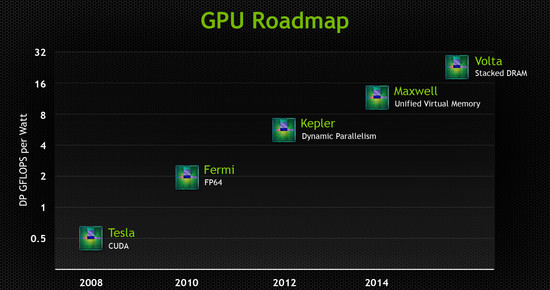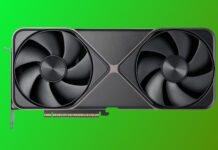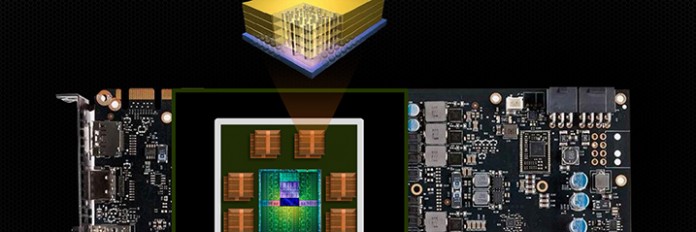Nvidia has announced that in the future it will license large portions of its technology to third parties. For a fee other companies will be able to integrate and make use of Kepler and coming architectures, Cuda and a row of patents.
Kepler under the heatspreader?
The announcement is a big shift for both discrete graphics and other markets Nvidia operates in. Nvidia will now license Kepler and when due its successor, Cuda and the portfolio of over 5,500 patents with graphics technology, to other parties that can then integrate the technology into its own system processors or other products.
In other words it is not impossible for a company to construct a system processor like Tegra, where it pays a license for using graphics processors from Nvidia and then combine it with a CPU architecture of its choice. Kepler fits well with this kind of licensing since it has been proven to scale well and could be implemented in both heavy discrete graphics cards and efficient system processors.

This way of designing system processors is very similar to what Apple has done with its A processors or Samsung with Exynos. And this is becoming more and more common on a market that is shifting toward the mobile. More and more companies making smartphones, tablets and other technology for compact and efficient system processors are looking for tailored solutions, without having to spend tons of money on research to create a processor from the ground and up.
Also competitor AMD has realized the importance of being able to deliver technology to third parties, for example what it did for Sony Playstation 4 and Microsoft Xbox One. There is a big difference between how AMD and Nvidia operate though. AMD tailors a solution with its technology for the customers, while Nvidia offers the technology to the customer for it to tailor its own product according to its own needs.
A broader competition
As we mentioned above this also includes coming graphics architecture, like the coming Maxwell and Volta. These coming architectures could be licensed with Nvidia’s own release, and technologically speaking a company could make a graphics card based on a new graphics architecture from Nvidia, but with a whole bunch of modifications. This also means that if Nvidia decides to skip an architecture a third party could still license the technology and market the architecture by itself.
You don’t have to license the entire architecture though, but a customer could license e.g. just the Cuda cores. This means a customer could make its own architecture that is still compatible with Cuda, or pick a different architecture but still have a bunch of Cuda cores for GPGPU. GPGPU is an area where it will put more weight in the future and this will spread to integrated markets.

The decision has in many ways affected Nvidia’s view of the competition. Partly it will compete with self-made and complete solutions like system processors for the Tegra family or graphics cards of the Geforce family, with other companies like AMD or Qualcomm. With the licensing of its architecture Nvidia can also widen and see its technology in products from third parties, which will put it up against companies like ARM Holdings and Imagination Technologies.
Currently it is just Kepler, Cuda, the graphics patent portfolio and future architectures that are confirmed for licensing, and it has expressed positive views on licensing the LTE modem Icera. Nvidia has made an interesting change that will affect several markets and hopefully we will get to see Kepler and its sucessors in products we otherwise would not.















